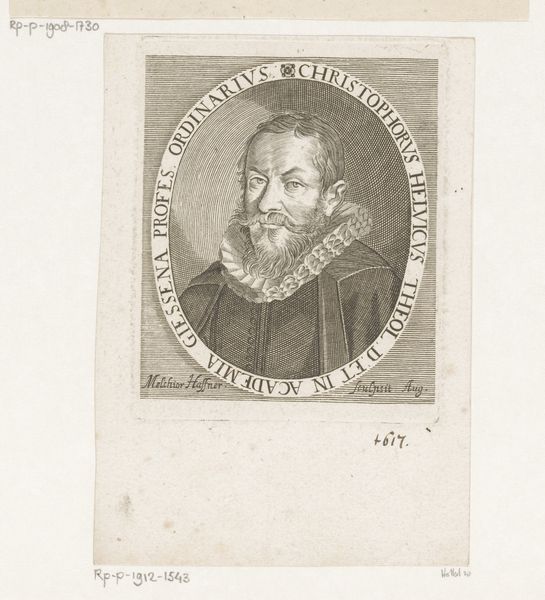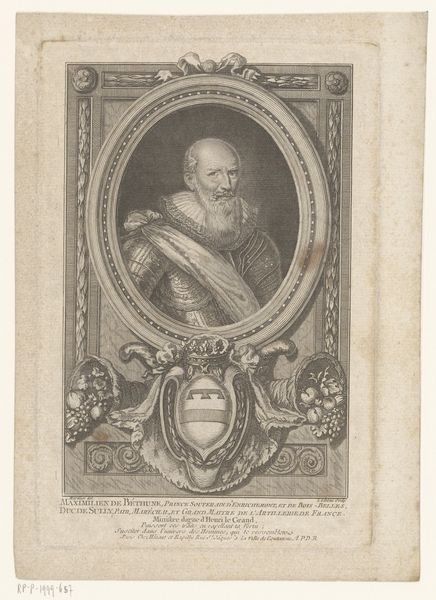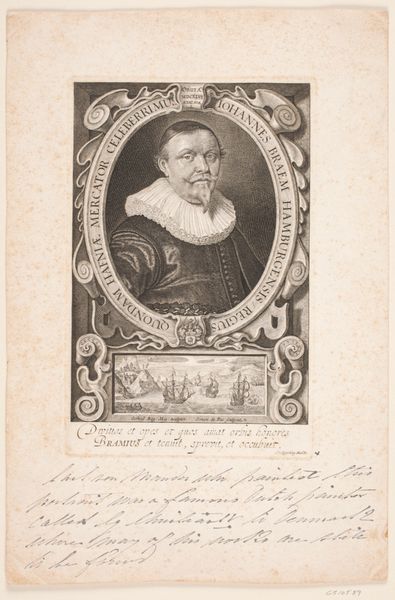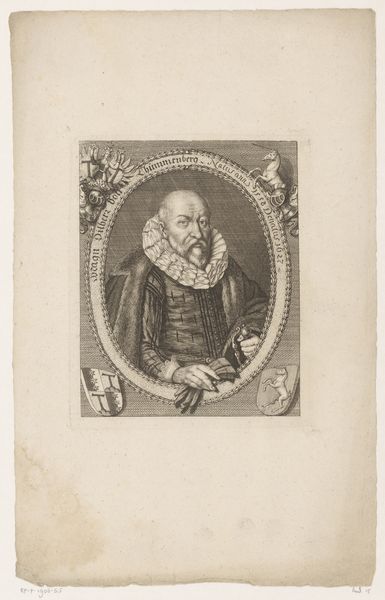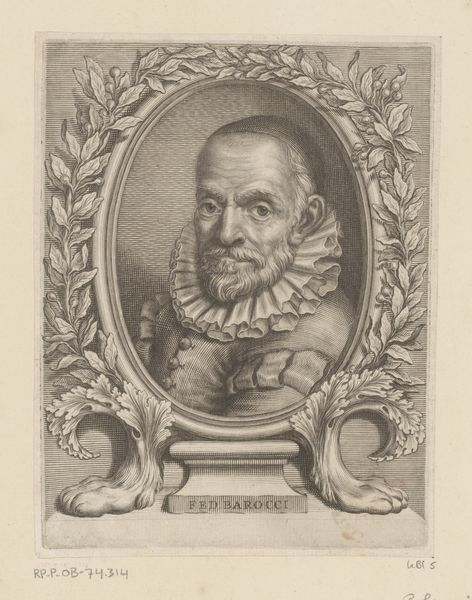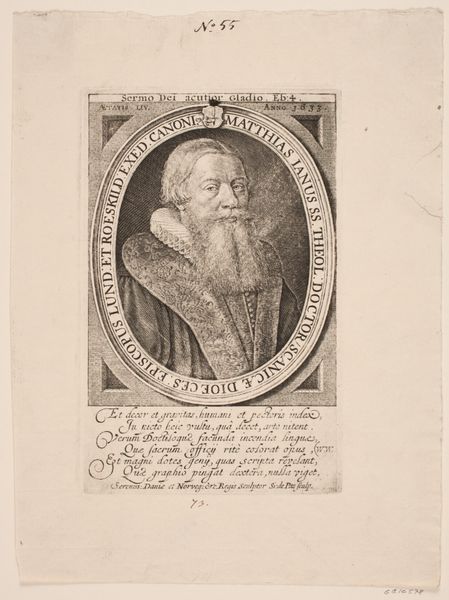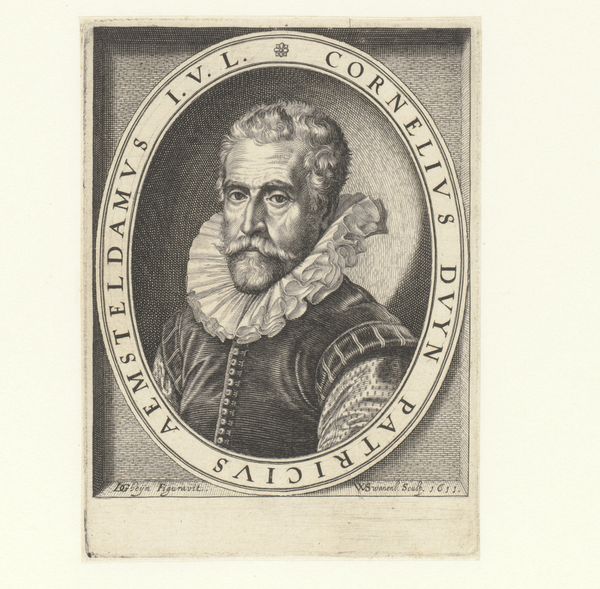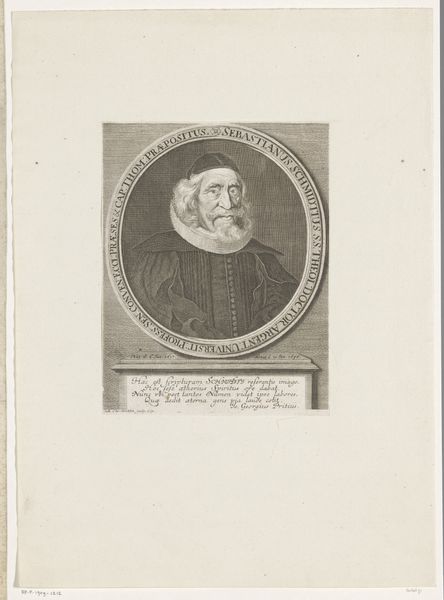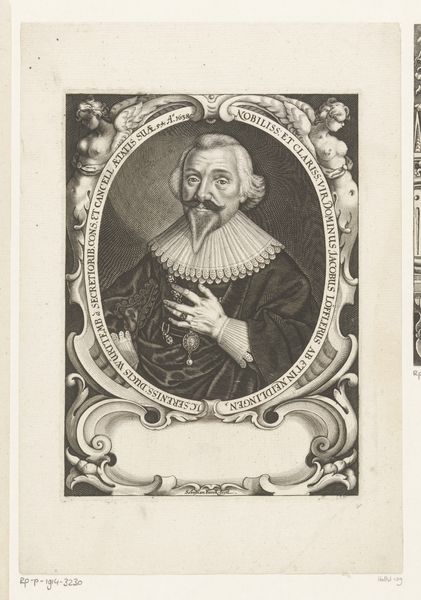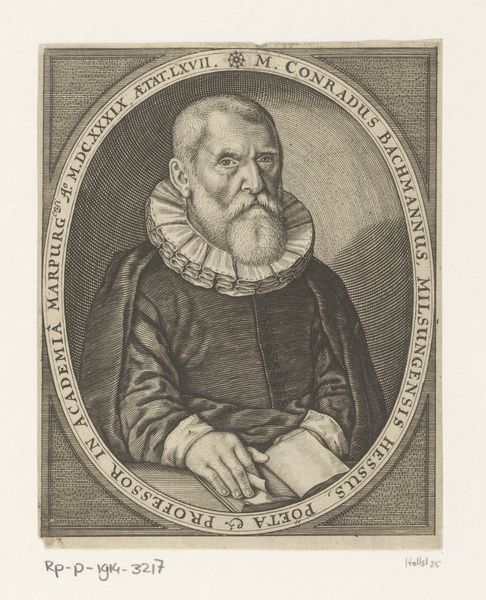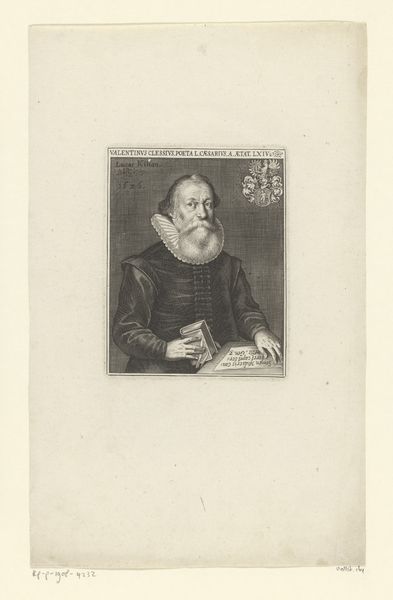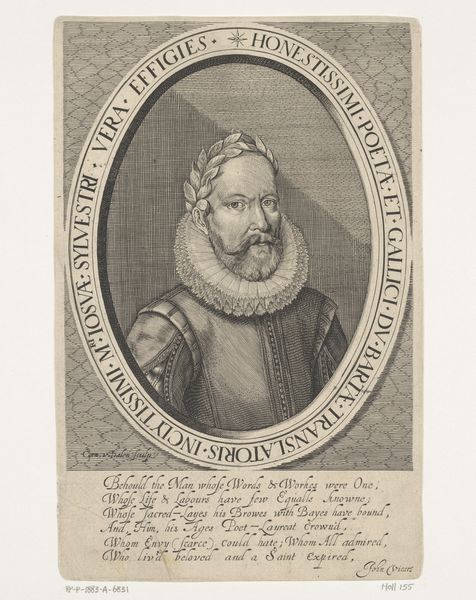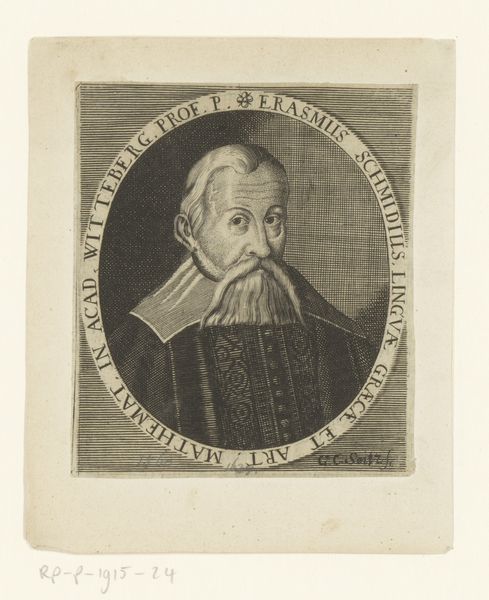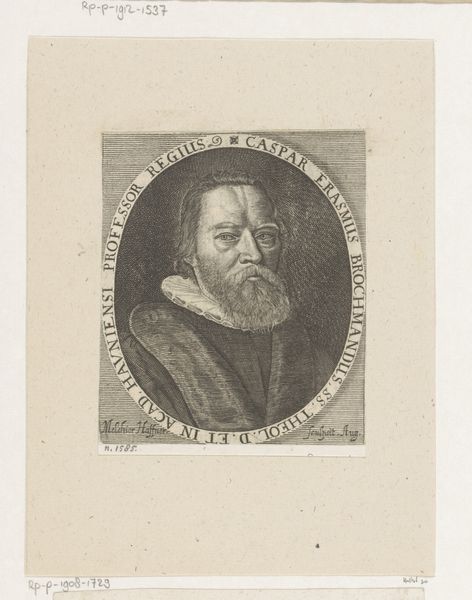
print, intaglio, engraving
#
portrait
#
baroque
# print
#
intaglio
#
woodcut effect
#
history-painting
#
northern-renaissance
#
tonal art
#
engraving
Dimensions: height 109 mm, width 88 mm, height 186 mm, width 161 mm
Copyright: Rijks Museum: Open Domain
Editor: This is a print, "Portret van Matthias Bernegger," created in 1673 by Melchior Hafner II. It seems to be an engraving or intaglio print. The details are so intricate, particularly the lace collar. What can you tell me about the choices made in the materials and the techniques involved here? Curator: This print invites us to consider the relationship between the means of production and the portrayal of intellectual authority in the 17th century. The choice of engraving, a meticulous and labor-intensive process, speaks volumes. What does the act of translating someone's likeness into a repeatable, mass-produced image using this technique imply about the subject, Matthias Bernegger, a professor of history? Editor: Well, the precision of the lines gives it an air of authority, mirroring Bernegger’s own position. But why choose printmaking at all? Surely painting would have been more prestigious? Curator: Exactly! The material choice isn’t just aesthetic. Printmaking allowed for wider dissemination, democratizing access to his image and, by extension, his ideas. Consider the role of the publisher here too – the labor, the skill needed to produce copies – who controlled the access to these images? And what about the paper itself, a material produced and consumed within a specific economic system? Editor: So, it's about how the materials and the printing process contributed to building and spreading Bernegger’s reputation in a very material way? Curator: Precisely. It's easy to focus on the subject of the portrait, but focusing on the act of *making* invites us to investigate the material circumstances that shape artistic creation, audience, and historical narratives. Editor: I never really thought about it that way before – considering the materials as active participants in constructing meaning. Thank you. Curator: My pleasure. Examining the materiality encourages us to question not only the image, but its distribution and the economic systems sustaining these things.
Comments
No comments
Be the first to comment and join the conversation on the ultimate creative platform.
